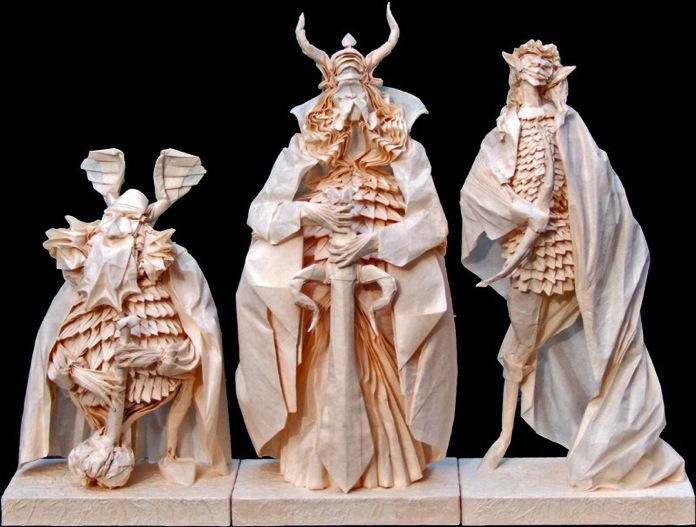The cache
The posted coordinates are not the coordinates of the cache, but of the beginning of the bike path which is a starting point for the cache hunting. The secret of real position of the cache is kept by a naughty dragon. To reveal the coordinates you will need your brains and able hands.
1. Print first the uploaded origami base paper (as big as possible). If you don't have a classical Japanese Origami paper, I recommend you to use a thin paper with two different sides - white and colored, for example wrapping paper for presents, because it is easier to follow the folding instructions. The numbers should appear on the colored side.
2. Than fold the paper according to the following origami diagram. Start with the colored side up (the one with numbers). The corner with the black dot should point up.
3. When you complete the dragon, read the following numbers:
ABC = the 3-ciphers underline number on the wing
EFG = the 3-ciphers italic number on the tail
The cache is hidden at N 43° 11.ABC E 023° 32.EFG
I know it is not easy to read origami diagrams, if you have never done it before, but it's fun and a good exercise for your brain and visualization skills.
Modern Origami


Eric Joisel - from the cycle "Lord of the Rings" and "Musicians"
It is generally believed that the origin of Origami is Japan. However, the paper folding was known independently also in China, Germany, Spain, among other places.
It is unbelievable that the XX-XXI century Origami art surpassed the perfection of traditional Japanese paper models. Modern origami creations look more like statues. They are made of different kind of papers, but also of bronze plates and other materials. The wet-folding technique as a final touch makes models to look more natural.
The society of Origami masters is very open and this is the secret of the enormous progress in last 40 years. Sharing ideas and diagrams with the rest of the world causes that the good models are improved again and again by the Origami fans and this is the right way how to develop very complex and beautiful objects. Traditional diagrams with a detailed explanation of folding process are not comfortable enough anymore. And the skilled origami makers prefer so called Crease Pattern - a simple picture with all folding lines on the unfolded paper. It is a miracle that such schema is enough to reproduce this gorgeous owl:


Robert Lang - The owl and its crease pattern
But, believe me, there are so many people in the world able to read such crease pattern. Do you continue to think that the diagram of the dragon is so complicated?
Origami Chess of black and white paper
This chess is for those who want to try something challenging. Following diagrams need more patience and skills. But the result is quite interesting. Here read how to make paper chessboard and chess figures.

Check the site Geocaching in Bulgaria